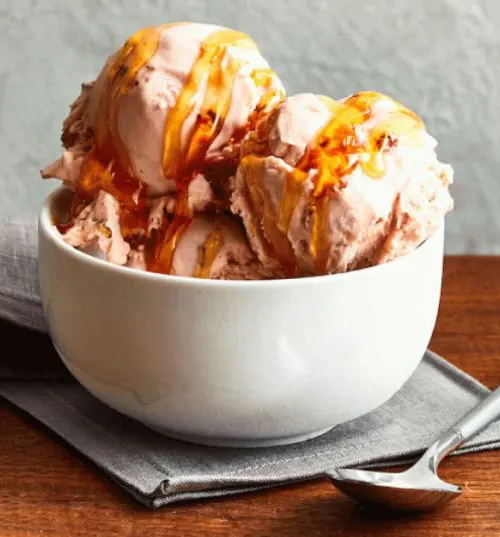Operators seek to adopt health-focused items, including gluten-free and vegan dessert options for restaurants and shops, that don’t sacrifice flavor
Consumers are increasingly seeking out treats that meet specific nutrition goals, such as items that are gluten-free, non-GMO or plant-based.
Although these consumers represent a minority of restaurant patrons, trends show operators should consider offering some gluten-free snack and healthy dessert options in restaurants and shops to capture sales that might otherwise be lost. With the growing number of organic and plant-based ingredient alternatives available, operators can also more easily meet the demands of consumers seeking vegan and non-GMO treats as well.
Flavor remains by far the most important attribute consumers seek when it comes to dessert, with 54% of consumers naming it as one of the most important attributes in selecting a dessert in a restaurant, according to a recent Datassential Dessert Keynote. However, nutritional information is also important to 16% of consumers, ranking it right behind the share-ability of a dessert, but ahead of the option to customize.
“It’s important to understand the needs of patrons and ensure some healthy options are offered to score big with a subset of consumers,” the Datassential report concluded.
Diet-specific and healthy dessert options are also important to some restaurant consumers, with more than a quarter (28%) of Datassential survey respondents reporting that these types of desserts were attractive. That percentage soars to 45% for Millennial consumers.
Restaurants have slowly been providing more options to accommodate these consumers. The Datassential report found that although only 7% of operators reported offering diet-specific desserts, 35% said they plan to offer these options.
Some foodservice operators have chosen to build their entire menu around these types of items, such as Canoga Park, Calif.-based Ring, which specializes in gluten-free donuts made from tofu and rice flour. The treats, which come in on-trend flavors such as Matcha Green Tea, Earl Gray, Red Velvet, Chai, Maple Bacon and Azuki, are also mostly organic (and therefore non-GMO), and all recipes are nut-free, making them safe for those consumers avoiding nuts because of allergies.
Ring donuts in the U.S. are based on a popular Japanese treat, which often uses tapioca-based flour as a gluten-free ingredient, or a tapioca paste combined with tofu.
Over the past decade or so, restaurants have expanded their gluten-free snack and keto dessert options. Some operators, such as P.F. Chang’s, have created entire gluten-free menus, so customers can select from a range of gluten-free appetizers, entrees, sides and a gluten-free Chocolate Soufflé for dessert.
Flourless chocolate cakes and soufflés are one of the most common ways restaurants have incorporated gluten-free and keto dessert options into their menus, leveraging the widespread appeal of chocolate to overcome whatever concerns consumers might have about the taste. At P.F. Chang’s the Chocolate Soufflé is topped with vanilla ice cream and raspberry sauce.
Operators can also consider featuring popular name-brand ingredients in their restaurant’s gluten-free, keto and diet dessert options to boost their appeal. For example, last year Mondelẽz International introduced OREO Gluten-Free cookies and OREO Double Stuf Gluten-Free cookies, adding them as permanent elements of its portfolio of products. The popular treats are certified gluten-free by the Gluten Free Certification Organization (GFCO), a program of the non-profit Gluten Intolerance Group. Operators following industry trends and looking to improve their restaurants' healthy dessert options can consider substituting them for traditional OREO Cookies in a range of snack and dessert recipes to enhance their menus.
According to a recent report from Research and Markets, the market for gluten-free bakery products is forecasted to grow at a compound annual rate of 11.9% globally from 2021-2026, as consumers around the world become more aware of celiac disease and other ailments related to gluten consumption.
Plant-based options
Plant-based dessert options at restaurants are also gaining popularity rapidly on menus.
The Datassential Dessert Keynote found that vegan dessert options were important to 35% of consumers seeking desserts for away-from-home occasions, and to 38% of consumers seeking desserts for at-home occasions. In addition, the term “vegan” was the fastest-growing term on frozen dessert menus during the last four years, with an increase of 169%.
Although Datassential’s recently released New Foundations in Health Keynote found that only 8% of consumers said they practice a vegan diet, “exponentially more” consumers are still interested in seeing the term on menus, Datassential reported. This reflects the increasing number of consumers adopting flexitarian eating routines in which they incorporate more plant-based foods into their diets.
As the roster dairy-free milk alternatives has expanded to include more plant-based options, such as oat- and hemp-based milks, as well as milks made from various seeds and nuts, operators have been finding more and more ways to incorporate dairy-free alternatives into their desserts and snacks to meet consumer demand.
True Food Kitchen, for example, has long offered vegan and gluten-free dessert options. Its vegan vanilla ice cream is made with coconut milk, and it also offers vegan pies topped with coconut whipped cream and a vegetarian, gluten-free flourless chocolate cake.
Little Sesame, a Middle Eastern fast-casual restaurant in Washington, D.C., was among the pioneers in using oat milk as a dairy alternative. The restaurant is known for its oat milk soft-serve ice cream desserts, which include Vanilla Tahini and Chocolate Turkish Coffee flavors.
Even red-meat steakhouses have embraced plant-based menu options. Kres Chophouse in Orlando, Fla., offers an acclaimed vegan menu that includes two desserts: The Brookie, a chocolate chip cookie that contains pieces of brownies and OREO cookies, along with plant-based vanilla ice cream; and the A La Mode, which features the non-dairy vanilla ice cream with chocolate sauce, caramel and mint.
Healthful snacking has become increasingly important to consumers, as detailed in this report from Mondelēz International Foodservice. As operators push the boundaries of gluten-free and plant-based recipe creation with new and innovative ingredients, and consumers increasingly seek out diet-specific options packed with flavor, trends show that snacks and restaurant healthy dessert options will continue to evolve.
For more flavor and ingredient inspiration, visit the Mondelēz International Foodservice Culinary Center.
Diet-specific treats gain wider appeal
Consumers seek dairy- and gluten-free dessert options at restaurants that offer flavor and better-for-you attributes
As gluten-free and dairy-free baking ingredients become increasingly mainstream, consumers are looking for products that meet their specific dietary goals, but still offer great taste. Chefs are creating dairy-free and gluten-free dessert options at restaurants using a variety of flours, such as those made from rice, while oat milk is increasingly being used as a dairy alternative.

Coolgreens Peanut Butter Energy Bites
Salad and sandwich chain Coolgreens offers this gluten-free snack option. The bite-sized treats are made with honey, oats, peanut butter, flax seed, vanilla, toasted coconut, and chocolate. The chain also has several gluten-free lunch options, like salads and grain bowls featuring ingredients such as its Cilantro Lime Brown Rice

Kyra’s Bake Shop Cupcakes
Kyra Bussanich, a four-time winner of Cupcake Wars on Food Network, operates a 100% gluten-free bakery in Portland Ore., where the flavors of her treats and desserts change daily. To produce its gluten-free offerings, Bussanich uses a combination of flour substitutes including rice flours, xanthan gum, and potato products. The menu includes gluten free, dairy-free and vegan dessert options.

P.F. Chang’s Chocolate Soufflé
The Chinese chain offers a full menu of gluten-free options, including this flourless chocolate soufflé, topped with vanilla ice cream and raspberry sauce. The gluten-free and diet dessert menu options at this restaurant are available both online and in-store, and include gluten-free versions of many of the items found on the regular menu.

Berry Almond Crisp Gelato
Pizza franchise Your Pie last year rolled out this seasonal dessert as a limited time offer, featuring gelato made with oat milk. It also included strawberries and almonds, and was a part of the chain’s Craft Series menu selections. Dairy- and gluten-free restaurant dessert options are becoming much more mainstream on menus, as operators increasingly incorporate on-trend, flavorful ingredients so that consumers don’t have to sacrifice great taste.
Stay Top of Mind With Operators
Read about 6 Trends Changing and Challenging the Foodservice Status Quo in 2022. Read Article
Recent Posts
All in Good Time: What Makes for a Winning LTO in 2021?
Chefs Cook Up the Future of Fast Casual Restaurant Operations
Chocolate 2.0: The Future of Chocolate Snacks & Desserts
Delivery-Only Restaurants Steer Foodservice in New Direction
Posts by Topic

Join our email list and be the first to know when we drop new articles, trends and insights with updates delivered directly to your inbox.




